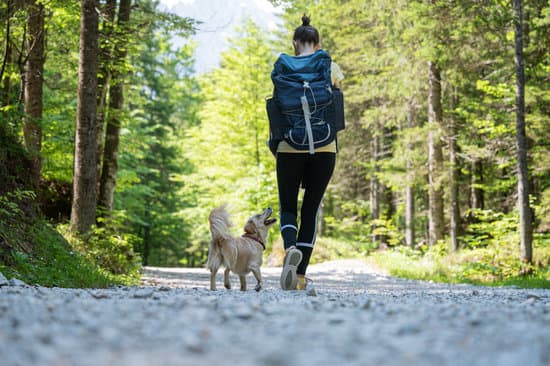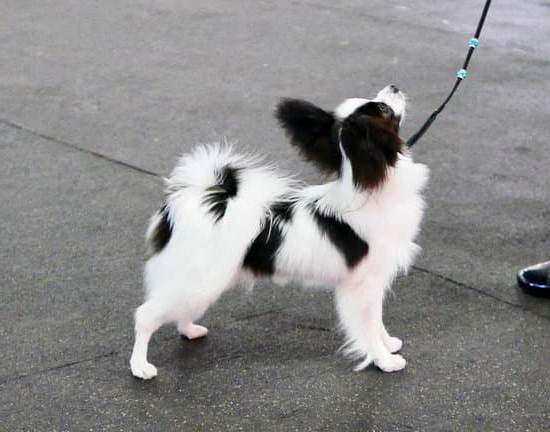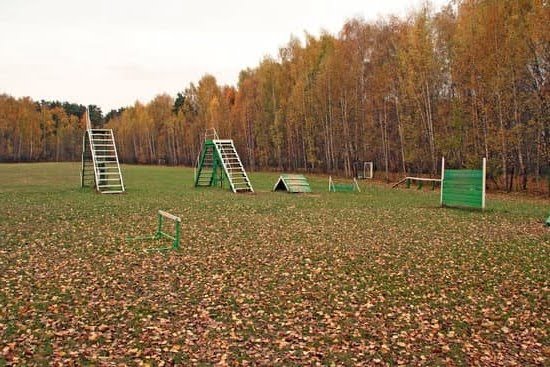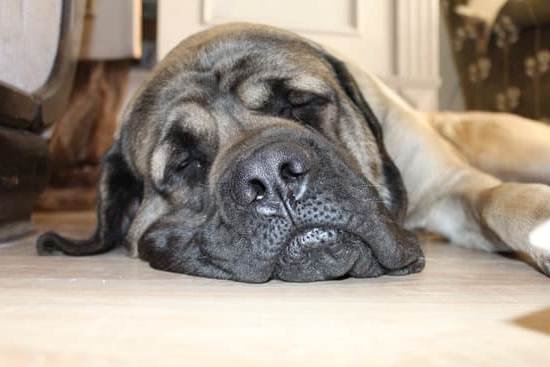Introducing a new family member, such as a baby or a young child, can be a big adjustment for everyone, including your furry companions. Ensuring that your old dog gets along well with the new kid is crucial for maintaining harmony in your household. In this article, we will delve into how to train an old dog to get along with a kid, addressing the importance of creating a peaceful coexistence between them.
Older dogs may have established routines and behaviors that can be challenged when a new child enters the picture. It’s essential to assess the current relationship between your old dog and the kid, looking out for signs of discomfort, aggression, or stress. Identifying any issues early on will allow you to take proactive steps towards creating a safe and comfortable environment for both your dog and child.
Setting clear boundaries and rules is key to ensuring that both your old dog and the kid understand what behavior is expected from them. By establishing guidelines and expectations, you create a structure that helps prevent conflicts and promotes positive interactions between the two. Through patience, consistency, and positive reinforcement techniques, you can help your old dog adapt to this new dynamic and develop a harmonious relationship with the newest member of your family.
Assessing the Situation
Evaluating the Relationship
When introducing a new child into a household with an older dog, it is crucial to carefully observe and assess the existing dynamics between them. Some dogs may naturally be more comfortable and patient around children, while others may find it challenging to adjust to the new addition. Pay close attention to how the old dog interacts with the kid – whether it displays signs of fear, anxiety, aggression, or discomfort. Understanding these behaviors will help you address any issues effectively.
Identifying Problematic Behaviors
It is essential to identify any problematic behaviors that the old dog exhibits towards the kid early on. This could include growling, snapping, nipping, or even avoiding interaction altogether. These behaviors may stem from various reasons such as feeling threatened by the child’s presence or being territorial. By pinpointing these behaviors, you can target them specifically during training sessions and work towards modifying them through positive reinforcement techniques.
Addressing Fear and Anxiety
Older dogs may struggle with changes in routine or environment, leading to fear and anxiety when a new child enters their space. It is crucial to address these emotions sensitively and patiently.
Create safe spaces for the dog where it can retreat if feeling overwhelmed and gradually introduce controlled interactions with the child in a calm manner. By slowly building trust and using positive reinforcement methods consistently, you can help alleviate fear and anxiety in your old dog as they learn how to interact positively with the new kid in the family.
Establishing Boundaries
Educate the Kid
One of the fundamental aspects of ensuring a harmonious relationship between an old dog and a new kid is to educate the child on how to interact with the dog. Teach the child about respecting the dog’s space, not disturbing them while eating or sleeping, and understanding their body language. By setting clear guidelines for the child, you can prevent any unintentional behaviors that may lead to conflicts with the old dog.
Define Safe Zones
Create designated safe zones for both the old dog and the kid in your home. Provide a comfortable area for the old dog where they can retreat when they need space or time alone. Similarly, establish a separate play area for the kid where they can engage in activities without disturbing the dog. By defining these safe zones, you can reduce potential stress on both parties and minimize any chances of disagreements or confrontations.
Consistency Is Key
Consistency in enforcing boundaries is crucial when training an old dog to get along with a kid. Ensure that everyone in the household, including other family members or guests, follows the established rules consistently. Consistent reinforcement of positive behaviors and redirection of negative behaviors will help reinforce expectations for both the old dog and the kid. By maintaining consistency in boundaries and rules, you can create a stable environment where both parties can coexist peacefully.
By setting clear boundaries and rules for both your old dog and your new kid, you can facilitate a smooth transition and foster a positive relationship between them. Through education, creating safe zones, and maintaining consistency in enforcement, you can successfully train your old dog to get along with your kid. Remember that patience and understanding are key components in this process as it may take time for behaviors to change.
Positive Reinforcement
One effective way to use positive reinforcement is by giving the old dog treats when they exhibit calm and friendly behavior towards the kid. This can help them understand that behaving well around the child leads to rewards. In addition to treats, offering verbal praise and affection can also reinforce this positive behavior. Dogs are social animals and thrive on attention and approval from their owners.
When implementing positive reinforcement techniques, consistency is key. Make sure to reward the old dog every time they display good behavior around the kid. This will help strengthen the desired behavior over time. By consistently praising and rewarding your old dog for being gentle and patient with the child, you are effectively teaching them how to interact positively in their presence.
| Positive Reinforcement Strategy | Impact on Old Dog |
|---|---|
| Treats | Creates a positive association with good behavior. |
| Praise | Reinforces desired behavior and strengthens bond. |
| Rewards | Motivates the old dog to continue displaying good behavior. |
Supervised Interactions
One way to supervise interactions between an old dog and a kid is to create designated spaces for each of them within the house. This helps in managing their interactions and providing separate areas where they can feel comfortable. Additionally, it allows you to control their initial meetings and gradually increase the time they spend together under your supervision.
During supervised interactions, pay close attention to the body language and behavior of both the old dog and the kid. Look for signs of discomfort or stress, such as growling, barking, or avoidance. If you notice any signs of tension, calmly separate them and address the situation with positive reinforcement techniques. Over time, with consistent supervision and positive reinforcement, you can help them build a positive relationship based on trust and understanding.
| Supervised Interactions | Key Points |
|---|---|
| Create designated spaces for each | This helps manage interactions |
| Pay attention to body language | Look for signs of discomfort or stress |
| Use positive reinforcement techniques | Help build a positive relationship based on trust |
Training Exercises
When it comes to training an old dog to get along with a new kid in the family, incorporating specific training exercises and activities can be extremely beneficial. These exercises are designed to help the old dog understand how to behave appropriately around the child and create a harmonious relationship between them. Here are some examples of training exercises that can help in this process:
- Desensitization Training: This involves gradually exposing the old dog to the presence of the child in a controlled environment. Start by having the kid sit quietly while the dog is at a safe distance. Reward calm behavior from the old dog with treats or praise, gradually decreasing the distance between them.
- Obedience Training: Teach or reinforce basic obedience commands such as “sit,” “stay,” and “leave it” to establish control over your old dog’s behavior around the kid. Use these commands consistently during interactions between them.
- Gentle Playtime: Encourage gentle playtime between the old dog and the kid by using toys or engaging in activities that promote positive interactions. Supervise these play sessions closely to ensure safety for both parties.
These training exercises not only help in improving the relationship between an old dog and a kid but also create a positive and enriching environment for both of them. Consistency is key when implementing these exercises, so make sure to practice them regularly to see effective results over time.
Remember, every dog is different, so be patient throughout this process as it may take some time for your old canine companion to adjust and learn how to interact appropriately with your new child. If you encounter any challenges or feel overwhelmed, do not hesitate to seek professional help from a certified dog trainer or behaviorist who can provide guidance tailored to your specific situation.
With dedication and effort, you can help your old dog adapt and thrive in its new role alongside your growing family.
Patience and Consistency
Older dogs may require more time and effort to adjust to the presence of a new child in the family. Patience and consistency are key when it comes to training an old dog to get along with a kid. It is crucial to understand that changing behaviors, especially in older dogs, can take time and consistent effort. By emphasizing the importance of patience and consistency, you can help facilitate a positive relationship between your old dog and your child.
To successfully train an old dog to get along with a kid, consider the following tips:
- Set realistic expectations: Understand that progress may be slow and setbacks may occur. Be patient with your old dog as they navigate this new dynamic.
- Consistent routine: Maintain a consistent daily routine for both the dog and the child. This will help create a sense of stability for your old dog during this period of adjustment.
- Positive reinforcement: Use treats, praise, and rewards consistently when your old dog displays good behavior around the child. This will reinforce positive interactions and encourage continued progress.
By staying patient and consistent in your training efforts, you are more likely to see positive results over time. Remember that every dog is different, so be prepared to adjust your approach as needed. With time, effort, and plenty of understanding, your old dog can learn how to get along well with your child in a safe and happy environment.
If you encounter difficulties or feel overwhelmed during the training process, do not hesitate to seek professional help from a certified dog trainer or behaviorist. They can provide expert guidance tailored to your specific situation and offer additional strategies to help improve the relationship between your old dog and child. Remember that it’s okay to ask for assistance when needed in order to ensure a smooth transition for everyone involved.
Seeking Professional Help
In some cases, despite all efforts to train an old dog to get along with a new kid in the family, there may still be lingering issues or serious concerns that need professional intervention. Seeking the help of a professional dog trainer or behaviorist can be crucial in addressing these challenges effectively.
These experts have the knowledge and experience to assess the situation objectively, identify underlying issues, and implement tailored strategies to improve the relationship between the old dog and the kid.
Professional trainers or behaviorists can provide valuable guidance on understanding the root causes of any problematic behaviors displayed by the old dog towards the kid. They can then work with you to develop a customized training plan that addresses these specific issues. Through their expertise, they can offer insights into behavioral modification techniques, effective communication strategies, and behavior management methods that can facilitate a positive change in the dynamics between your old dog and your kid.
It is essential to recognize when it is time to seek professional help in training an old dog to get along with a kid. If despite consistent efforts and training exercises, there are persistent behavioral problems, aggression, fearfulness, or any other serious issues putting either your dog or your child at risk, reaching out to a professional is imperative.
Their specialized knowledge and skills can make a significant difference in creating a safe and harmonious environment for both your beloved pet and your precious little one.
Frequently Asked Questions
How Do You Socialize an Older Dog With Kids?
Socializing an older dog with kids requires patience, consistency, and positive reinforcement. Start by introducing the dog to children in a calm environment, rewarding good behavior, and supervising interactions to ensure safety for both parties.
What to Do if My Dog Doesn’t Like Kids?
If your dog doesn’t like kids, it is essential to identify the root cause of this behavior. It could be fear, past experiences, or lack of socialization. Consult with a professional trainer or behaviorist to develop a plan to address this issue effectively.
How Do I Get My Dog to Bond With My Child?
To help your dog bond with your child, encourage positive interactions between them. Allow them to spend quality time together through play, walks, and training sessions. Always supervise their interactions and provide rewards for good behavior to strengthen their relationship.

Welcome to the blog! I am a professional dog trainer and have been working with dogs for many years. In this blog, I will be discussing various topics related to dog training, including tips, tricks, and advice. I hope you find this information helpful and informative. Thanks for reading!





